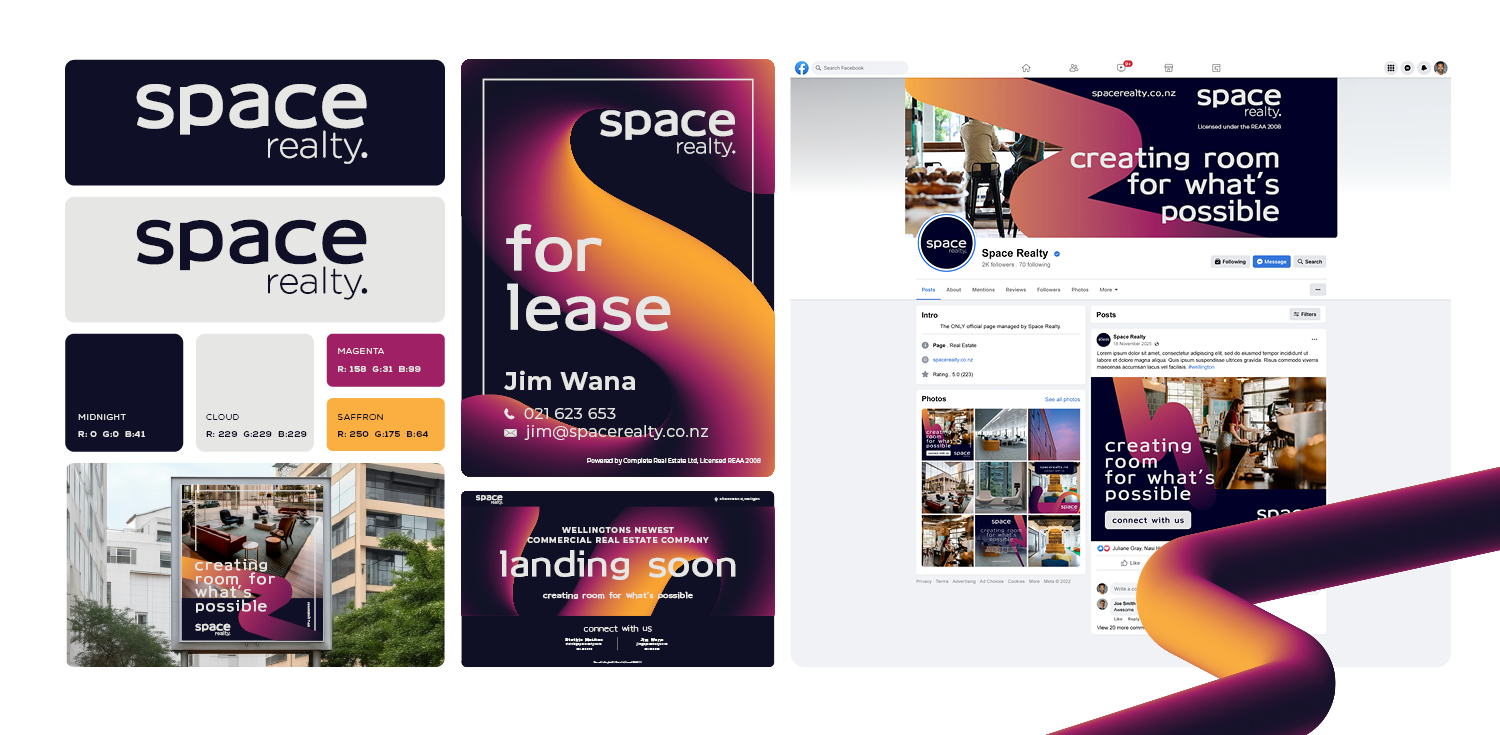TBD was engaged to develop a fresh, innovative commercial real estate brand based in Wellington, known as Space Realty.
The primary goal was to craft a brand identity that would distinguish itself clearly and effectively amidst a competitive marketplace filled with other established brands. Our team focused on designing a vibrant and eye-catching brand that could capture the attention of viewers even from a distance, ensuring strong visual impact. To achieve this, we emphasised the strategic use of bold, lively colours combined with dynamic and distinctive shapes, creating a memorable visual presence. The typography and logo we designed are characterised by a clean, minimalistic aesthetic with a subtle footprint, which allows the vibrant colour palette and energetic shapes to take centre stage. This balance of simplicity and vibrancy ensures the brand remains recognisable and engaging, effectively communicating its modern and forward-thinking approach to commercial real estate.
Our scope of work extended beyond just logo design; we produced a comprehensive branding suite that encompasses both print and digital assets to ensure consistency across all touchpoints. This includes business cards, letterheads, digital banners, social media graphics, and more. However, the highlight of our project was the design of the for-lease signage, which is a crucial element since it will be the most frequently used and highly visible component of the brand's marketing efforts. This signage was crafted to be highly impactful, easily recognisable, and capable of drawing attention even from a distance, reinforcing the brand’s presence in the Wellington commercial real estate scene. Overall, our approach was centred on creating a vibrant, memorable, and versatile brand identity that would position Space Realty as a standout player in the industry.
We're excited to see this brand take on more shape over time. Space Realty can be found here.





